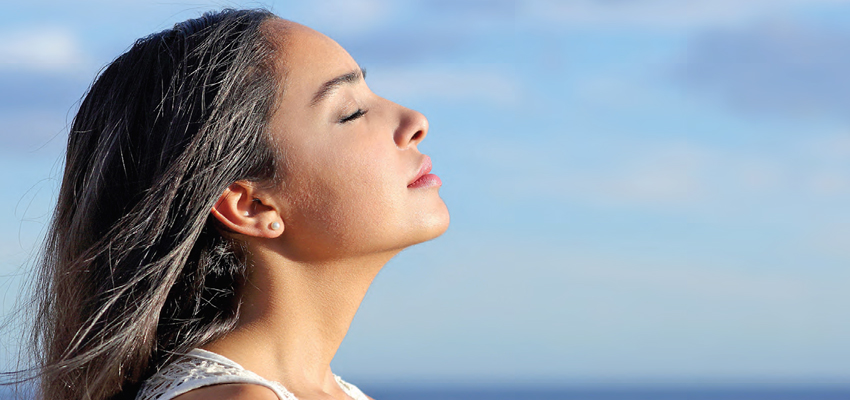Know breath, know life

In one minute we breathe nearly sixteen to seventeen times. If you are upset it may go up to twenty; if you are extremely tense and angry, it could total twenty-five per minute. Ten, if you are very calm and happy, two to three breaths if you are in meditation. Deep meditation can reduce the number of breaths you take
Our breath holds a lot of secrets because for every emotion in the mind, there is a corresponding rhythm in the breath. And each rhythm affects certain parts of the body, physically. You only need to observe it to feel it. For instance, we feel a sense of expansion when we are happy and a sense of contraction when miserable. Though, we feel that happiness or misery and the sensation, we fail to notice the connection.
Knowledge is knowing that which expands. What is that? This knowledge, this enquiry is the study of consciousness, is the study of life, which is the study of prana, the study of Ayurveda. Have you ever counted how many times you breathe in a minute? Breathing is the first act of life and it’s the last act of life. In between, the whole life we are breathing in and out, but not attending to the breath.
Ninety per cent of the impurities in the body go out through the breath because we are breathing twenty-four hours a day. However, we are using only thirty per cent of our lung capacity. We are not breathing enough. See, the mind is like a kite and the breath, a thread. For the mind to go high the breath needs to be longer. You don’t have to take Prozac if you can attend to the breath.
For the mind to go high the breath needs to be longer
In one minute we breathe nearly sixteen to seventeen times. If you are upset it may go up to twenty; if you are extremely tense and angry, it could total twenty-five per minute. Ten, if you are very calm and happy, and two to three breaths if you are in meditation. Deep meditation can reduce the number of breaths you take.
If you observe an infant, you will be amazed at how balanced they breathe. They breathe from all the three sections of the body. As they breathe in their belly comes out, as they breathe out their belly moves in. But the more nervous and tense you are, you will do the reverse. When you breathe out your tummy will come out and when you breathe in, it goes in.
To understand this, you don’t have to go to a school or learn from anybody if you have the sharpness of mind. But our mind is so preoccupied with so many things, judgments, opinions, and impressions in the mind so we are unable to observe, perceive the refine things in nature.
So we need to study. The yogaasanas are something, which everyone has done as a child. Have you seen a six-month-old baby lying on its back with its legs up? And it kicks its legs and head also up, almost like what you do with the (abdominal) machine. Then it goes on its back and does the ‘cobra’ posture in yoga. And if you observe a sleeping child, its thumb and the index finger slightly touch a formation which is the ‘Chin mudra’. Or go to a zoo and observe the monkeys. Even they do many of the asanas to keep themselves healthy. So these are the things that coordinate body, breath, mind and spirit. And Ayurveda attends to this holistic approach. There are so many points in the body which correspond with different sensations but these are reflections of something which is beyond all this. What is that something? That is the source of life.
Health is... Disease-free body, Quiver-free breath, Stress-free mind, Inhibition-free intellect, Obsession-free memory, Ego that includes all and Soul which is free from sorrow.